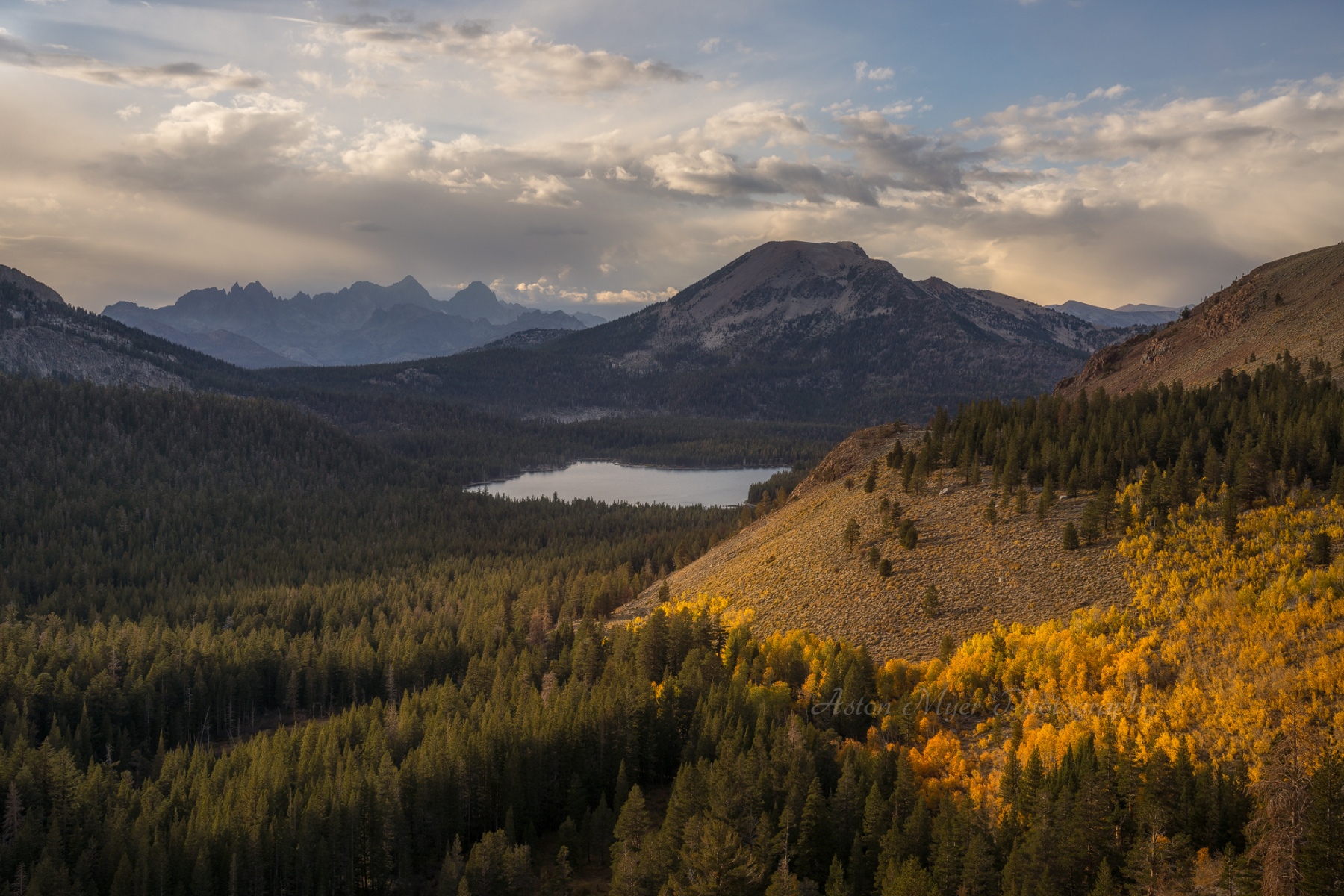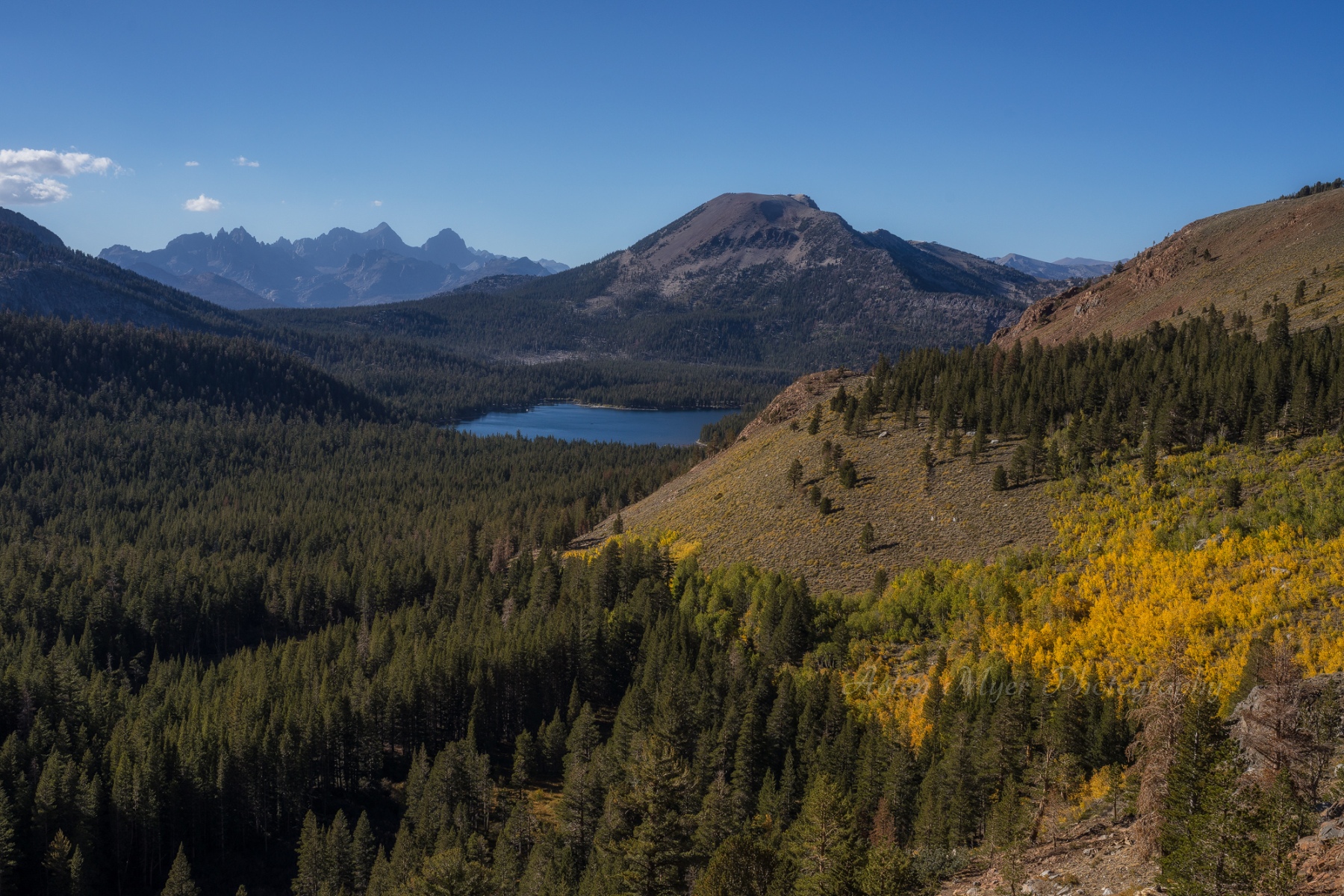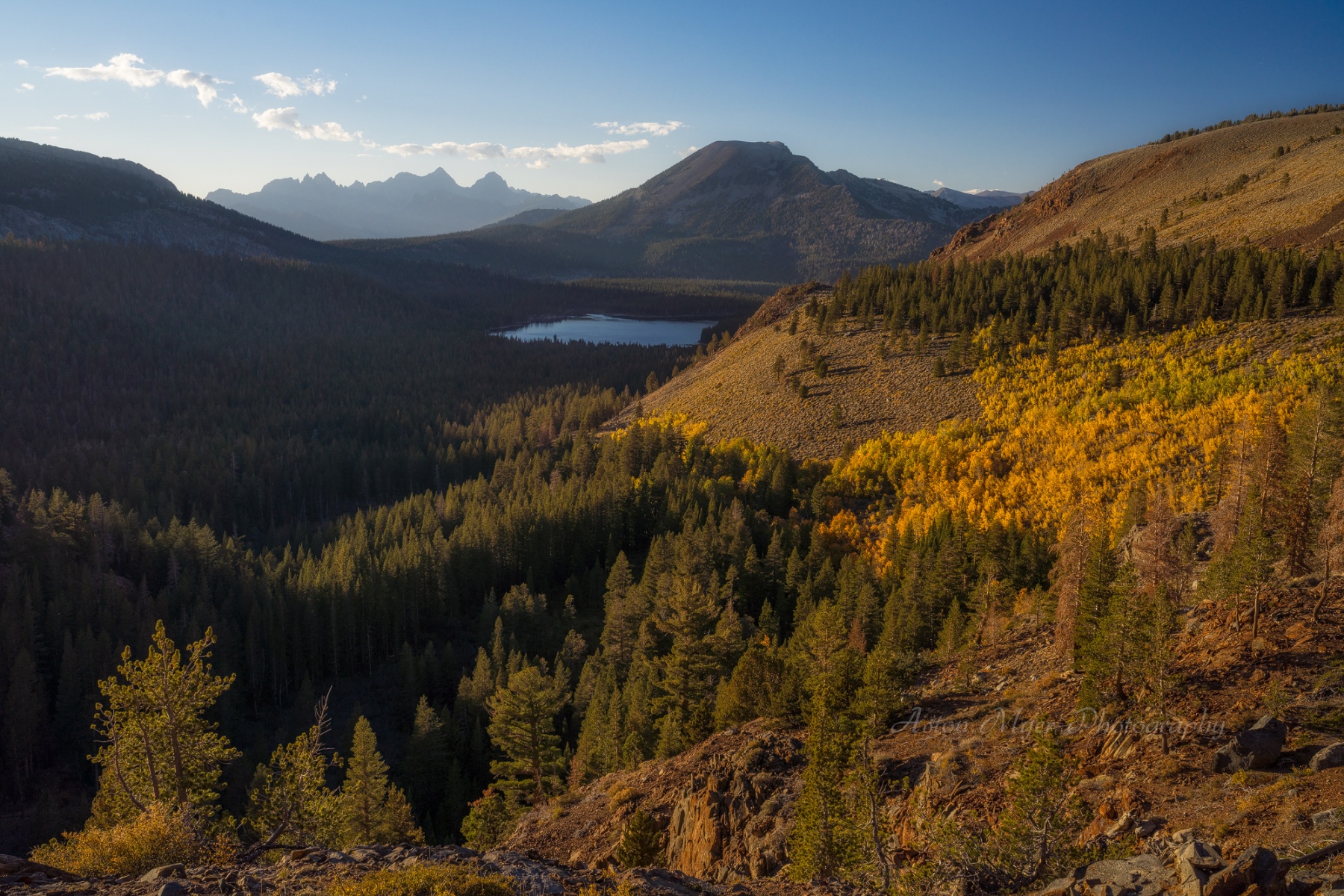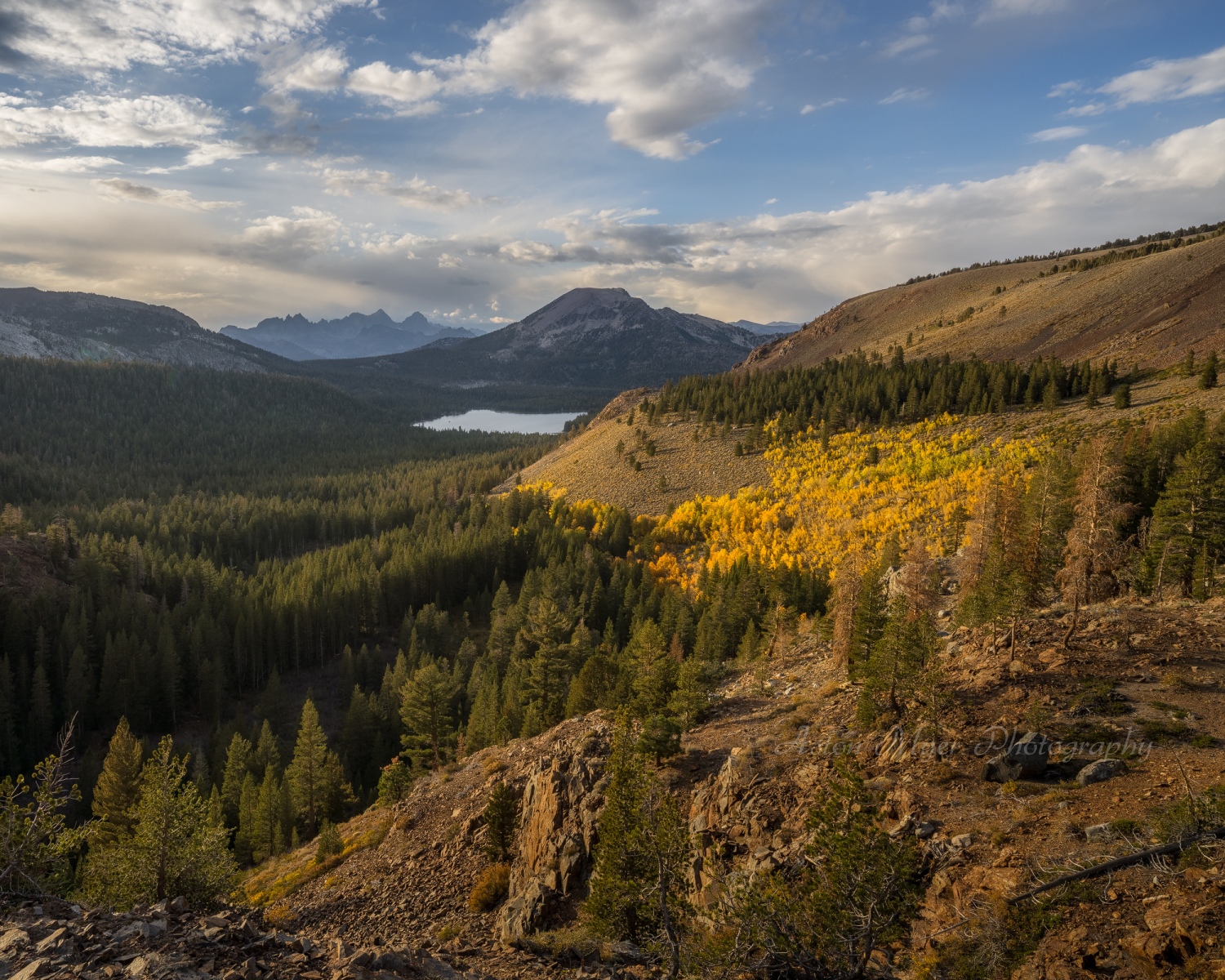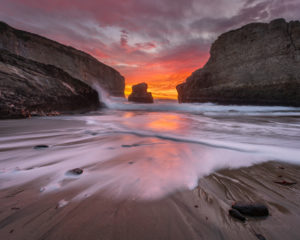Spending most of my time thinking about photography has changed my standards for what makes a good image. This isn’t too surprising for anyone familiar with the Dunning-Kruger curve. The more you know, the more disappointed you’ll be with small imperfections. Also, photographing where I live allows me to return to a spot repeatedly until the conditions fit with the right mood for an image.
This is going to be a two part post, starting with a recent image in the Mammoth Lakes Basin. Dori decided to go on a hike that was new to her and found an overlook that she wanted to show me. The trail snakes through an aspen colony that stands out against a sea of pine. It had a lot of potential, so I made a note to check on the progress of the aspens changing color. On the first scouting trip, there was a band of greener aspen that made the colony look disconnected. Not great. Considering the different elements of the image, I’d need to wait for the color to progress.
What time of day would be best to photograph this? Early morning would have the light coming from the right side of the image, and late afternoon from the left side. I consider the aspen color to be the primary subject, so it made more sense to highlight the trees. Late afternoon it is.
I returned later in the week to find that the color had progressed, so I hiked back to my vantage point and watched the light change. The light was nice and warm as the sun dipped very low along a ridge to the west. I was reasonably happy, and it showcased the aspen and harmonized well with the mountain background. Checking with my sunglasses, a polarizer also significantly changed the scene by cutting down on hotspots that would distract from my main subject. However, using the polarizer at a wide angle can produce polarizer blob in the sky from uneven polarization (polarizers are most effective 90° from the sun). I took one image with the polarizer set to maximum and another set to neutral for the sky, and blended them together. Scroll through to check the differences.
This fall season has been mostly blue skies, which isn’t ideal for landscape photography, but not only for the sky to have some interest. Clouds can also attenuate the sunlight and soften sharp direct light. With a forecast of clouds, I returned to this spot for a fourth time looking for some difference. The light was softened, but I was worried that the sun would stay behind the clouds and keep the aspen from being highlighted. Fortunately, the sun broke through the thicker clouds enough to highlight the trees, but it was significantly softer. Not to mention the clouds over the Sierra were much more interesting.
I took some tighter compositions to simplify the scene at 45mm to go with my previous 30mm composition. In this softer light, the simpler scene with the aspen, the lake, and the Sierra felt more refined without the foreground trees highlighted against the sea of pine below.
